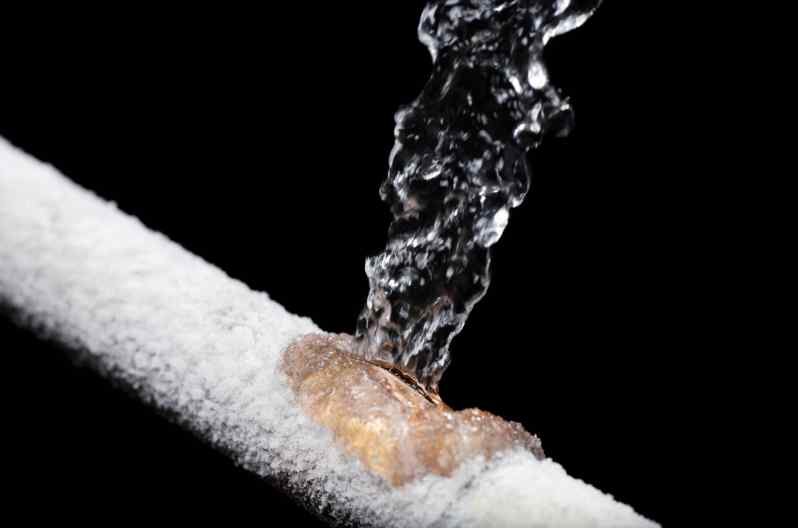Stop the Flood: Strategies for Finding and Dealing With Ruptured Pipes
Stop the Flood: Strategies for Finding and Dealing With Ruptured Pipes
Blog Article
Have you been trying to locate selective information on How to Install and Connect a New Dishwasher?

A burst pipeline is a significant emergency; you can only stand as you enjoy water you pay a lot to reunite with the planet. In even worse cases, you discover a swimming pool on your kitchen floor, which is an excellent trip risk, particularly if you have youngsters around. If the pipe that burst remained in your walls, trouble: you might need to repaint that whole area.
How can a disaster like a ruptured pipeline be prevented as well as handled? Well, by paying attention to your professional emergency plumbers and following these guidelines.
Exactly how do I understand when my pipes have burst?
Changing water stress
Pipelines do not simply burst in a day. You may have observed that your kitchen area faucet or shower doesn't run instantly when you turn the faucet. It may stop briefly for a couple of secs and afterwards blast you with even more force than usual.
In other instances, the water may seem typical at first, then drop in pressure after a few seconds.
Contaminated water
Lots of people presume a burst pipe is a one-way outlet. Rather the contrary. As water drains of the hole or laceration in your plumbing system, pollutants discover their method.
Your water might be polluted from the resource, so if you can, inspect if your water storage tank has any type of issues. Nevertheless, if your drinking water is supplied as well as purified by the city government, you ought to call your plumber instantly if you see or scent anything amusing in your water.
Puddles under pipes and sinks
When a pipe ruptureds, the discharge forms a pool. It might appear that the puddle is expanding in dimension, as well as regardless of the number of times you mop the puddle, in a couple of mins, there's an additional one waiting to be cleaned up. Typically, you may not be able to trace the pool to any kind of noticeable pipes. This is a sign to call a professional plumber.
Damp wall surfaces and water stains
Prior to a pipeline bursts, it will leakage, the majority of times. If this consistent dripping goes undetected, the leak may finish right into a broad gouge in your pipe. One very easy method to avoid this emergency is to look out for damp wall surfaces ad water stains. These water stains will certainly lead you right to the leakage.
Untraceable leaking noises
Pipeline ruptureds can happen in one of the most undesirable areas, like within concrete, inside walls, or under sinks. When the house goes quiet, you may be able to listen to an irritatingly persistent trickling noise. Even after you have actually inspected your shower head and cooking area tap, the trickling might proceed.
Precious reader, the trickling may be originating from a pipeline inside your walls. There isn't much you can do concerning that, except inform a professional plumber.
Turn up the Warmth
Set up followers to blow warm right into chilly rooms. Maintain the garage door closed. If you have actually reduced water circulation, heat one of the most susceptible pipelines (normally in basements as well as crawl spaces or near outside walls) with a hair clothes dryer. Leave the faucet on while you use heat. As you thaw ice, the flow will certainly increase. To stop pipes from cold, insulate your wall surfaces.
Start Doing Away With the Water
Grab the wipe, pails as well as a store vacuum to begin to eliminate the water due to the fact that you certainly do not want it soaking right into everything else in your home. And also, a quick tidy up will decrease the opportunities of something getting musty.
What do I do when I spot a burst pipeline?
Your water meter will continue to run also while your water wastes. To minimize your losses, discover the primary controls and also turn the supply off. The water pipe are an above-ground framework at the edge of your building.
How to Fix & Detect a Leaking Pipe
How Do I Know if a Pipe is Leaking?
Leak detection tests can help you determine if your pipe has a leak. Even if you don’t see an apparent leak, you should still conduct leak detection tests regularly to save water and money—and prevent major damage to your home.
Water meter. It can be helpful to figure out what your usual water meter usage numbers are and then monitor them regularly. To monitor your meter, first, turn off all water faucets in your home. Check the meter and write down the numbers. In a few hours, check the meter again. If the numbers have changed, you have a leak. Water gauge. Use a water gauge to test your water pressure. Your showerhead should produce a certain amount of water pressure based on its model and design. If the pressure is lower than it is supposed to be for that specific showerhead, your home likely has a leak. Puddles. Look inside your bathroom, laundry, and kitchen sink cabinets. Puddles around the cabinets or around toilets, tubs, showers, and washing machines indicate the presence of a leaking pipe. You may also notice loose tiles, peeling or flaking paint, or mold caused by water accumulation. Napkin test. Even if you don’t see any puddles, you may still have a leak. You can test for water leaks in the bathroom, laundry, and kitchen by wiping below-sink connections with a napkin, paper towel, or piece of toilet paper. If it becomes damp, you probably have a leaking pipe under the sink. Discolored walls. Walls that are discolored—usually with brown or yellow stains—or bulging might mean that they have been impacted by water damage caused by a leaking pipe. Smell. A leaky pipe will create sitting water, and over time, that water may develop a musty smell. If your home smells musty, but you can’t locate the source, it may be due to a leak. Steps for Fixing a Leaking Pipe
A leaky drain can be remedied by tightening the pipe base, replacing the drain seal, caulking the rim, and tightening the pipe nut. Similarly, a leaking toilet pipe can be treated by tightening the packing nut. You may also need to replace the valve. A leaky faucet may just need tightening or replacement of the washers. If that doesn’t work, consider replacing your faucet. If your pipe has a hole in it, you may want to use a pipe leak sealer or pipe leak tape. This quick fix for water pipe leaks can also temporarily fix a copper pipe leak. https://www.ahs.com/home-matters/quick-tips/how-to-tell-if-pipes-are-leaking/

I came across that blog posting on What to Know Before Installing a Dishwasher when doing a search on the internet. Sharing is caring. One never knows, you may very well be helping someone out. Thanks for going through it.
Learn More
Report this page